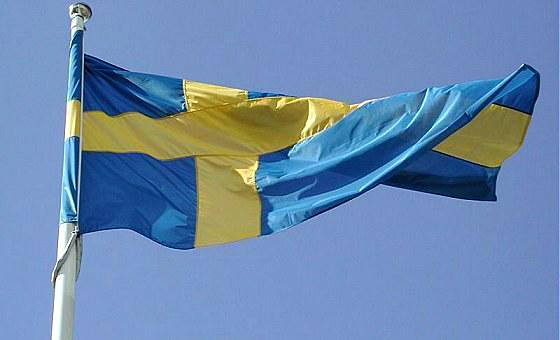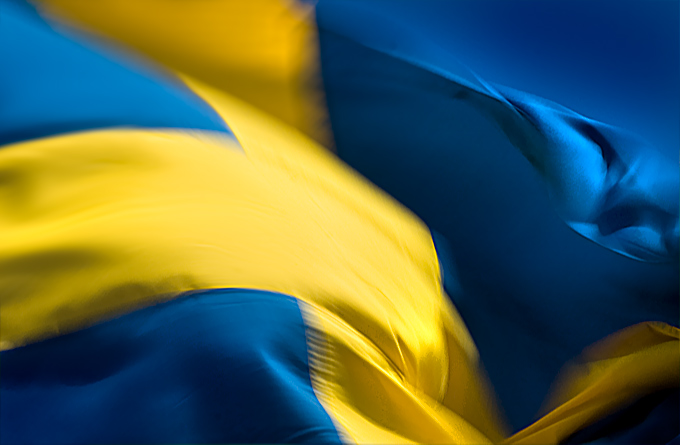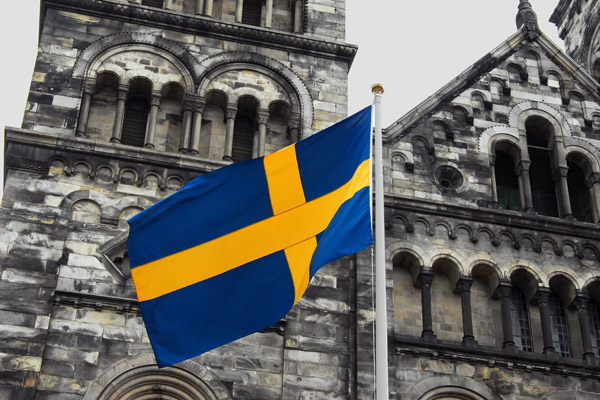The Flag - A National Symbol
Historic facts, trivia and a list of celebrations in Swedish America.
-
 On June 6, Swedes celebrate the nation's National Day.
On June 6, Swedes celebrate the nation's National Day. -
-
Today’s celebration of the flag on what's now National Day, June 6, started at Skansen in Stockholm in 1893. Celebrating Sweden on a special day had been discussed for some time, and several different dates were proposed, including that of midsummer. Arthur Hazelius, who founded the Skansen open air museum, wanted to use the opportunity to ordain a celebration in conjunction with the annual Spring Festival on June 6. List of Swedish National Day Celebrations in the U.S.
-
 According to an earlier list, Sweden is the best place to be. The list takes into account factors like human rights, environment, democracy, corruption, freedom of press, equality, the peace and happiness of the people, and competitiveness. Above is the Swedish flag. According to mythology, the 12th century Swedish King Eric the Holy saw a golden cross in the sky as he landed in Finland during the First Swedish Crusade in 1157. Seeing this as a sign from God, he adopted the golden cross against a blue background as his banner. (The cross then became yellow, to make it easier and cheaper to make).
According to an earlier list, Sweden is the best place to be. The list takes into account factors like human rights, environment, democracy, corruption, freedom of press, equality, the peace and happiness of the people, and competitiveness. Above is the Swedish flag. According to mythology, the 12th century Swedish King Eric the Holy saw a golden cross in the sky as he landed in Finland during the First Swedish Crusade in 1157. Seeing this as a sign from God, he adopted the golden cross against a blue background as his banner. (The cross then became yellow, to make it easier and cheaper to make). -
-
Above all else, the blue and yellow flag had since the late Middle Ages been a symbol of military might. The flag was not even raised at Stockholm castle until the time of Oscar II. After the resolution of the union the so-called “sillsalaten,” the herring salad (the blue-white-red Norwegian symbol) disappeared. The spirit of that time helped raise the flag as a national symbol. Organized sports and organizations then took up the flag as a symbol. The workers’ movement, however, held fast to the red banners and viewed the blue-yellow as something of a sign of the upper class.
-
 Swedish flag flying in front of Lunds Domkyrka (Lund Cathedral). Photo by Brian McMorrow, Pbase.
Swedish flag flying in front of Lunds Domkyrka (Lund Cathedral). Photo by Brian McMorrow, Pbase. -
Swedish Flag Day
Certainly the ongoing world war contributed to the fact that in 1915 a committee for a Swedish Flag Day was formed. Both June 6 and Midsummer Eve were in consideration at dates - the latter already established on our folkfest calendar and the day of entry by Gustav Vasa into Stockholm. It was also the day when the flag laws were signed after the break-up of the Union.
But strangely enough it was June 6 that won out. The day that Gustav Vasa was crowned king and the basic laws [the Constitution] of 1809 was signed.
There was never any talk of a national day but of a flag holiday. That came to be emphasized even more when the enterprising post order salesman J.P. Åhlen decided to give away 2,000 flags to those who could show they owned a flagpole at least 12 meters high. Over 16,000 people responded, and through an additional fundraiser 8,000 flags were given out. More than anything else, that has contributed to the fact that the blue and yellow flag now flies over the entire country. -
At Stockholm Stadium
The first flag holiday was celebrated in 1916 in the new stadium in Stockholm, and the military element totally dominated the program. But 1922 saw — at least symbolically — a turning point. That year the leading person of the workers’ movement, Hjalmar Branting, was the main speaker at the festivities. There he indicated that Flag Day should be a celebration for all the people and not only for an elite in the capitol city.
But Swedish Flag Day still was mainly supported by the military and voluntary organizations. High-brow speeches, brass bands and marches were the most common elements around the country on June 6. During World War II the day, for obvious reasons, became an opportunity to assemble with broad support. But after the war the interest dropped off in the same degree as the military involvement in ceremonies was diminished for practical and economic reasons. The interest in the patriotic legacy was neither especially strong during the 1950s, 60s and 70s. -
At Skansen
The large public spaces at the stadium were no longer filled. The capitol’s flag festivities were moved in 1963 to the somewhat smaller and more intimate Skansen. With this the circle was closed since it really was there the whole thing began in the beginning of the 1890s. -
June 6 was first developed to become the Swedish Flag Day, and although there was talk of making it Sweden’s National Day already in 1923 it took 60 years, until 1983 for the day to become Sweden’s official National Day through a decision in parliament (Riksdagen). In 2005 it was made a bank holiday by making Whit Monday, which had earlier been a bank holiday, a regular workday.
-
-
